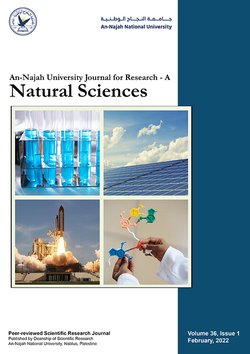Text-to-Speech Synthesis by Diphones for Modern Standard Arabic
Authors:
Article info
2001-05-29
2005-11-22
2005-11-22
159 - 166
Keywords
Abstract
An unlimited vocabulary text-to-speech synthesis by diphones system is used to generate Modern Standard Arabic speech: the system is the PSOLA algorithm; the diphones are obtained from the permutation of 44 phones (phonemes and allophones). The diphonic combinations were introduced in carrier words and recorded by a selected speaker. A dictionary of diphones was established by means of a process of segmentation that abided by certain rules. Evaluation of the system was undertaken to assess the accuracy on word and sentence levels. The results showed high perception levels.
Abu Ghattas, N., & Abdel Nour, H. (2005). Text-to-Speech Synthesis by Diphones for Modern Standard Arabic. An-Najah University Journal for Research - A (Natural Sciences), 19(1), 159–166. https://doi.org/10.35552/anujr.a.19.1.604
[1]N. Abu Ghattas and H. Abdel Nour, “Text-to-Speech Synthesis by Diphones for Modern Standard Arabic,” An-Najah University Journal for Research - A (Natural Sciences), vol. 19, no. 1, pp. 159–166, Nov. 2005, doi: 10.35552/anujr.a.19.1.604.
Abu Ghattas, Nader, and Hanna Abdel Nour. “Text-to-Speech Synthesis by Diphones for Modern Standard Arabic.” An-Najah University Journal for Research - A (Natural Sciences), vol. 19, no. 1, Nov. 2005, pp. 159–66. Crossref, https://doi.org/10.35552/anujr.a.19.1.604.
1.Abu Ghattas N, Abdel Nour H. Text-to-Speech Synthesis by Diphones for Modern Standard Arabic. An-Najah University Journal for Research - A (Natural Sciences) [Internet]. 2005 Nov;19(1):159–66. Available from: http://dx.doi.org/10.35552/anujr.a.19.1.604
Abu Ghattas, Nader, and Hanna Abdel Nour. “Text-to-Speech Synthesis by Diphones for Modern Standard Arabic.” An-Najah University Journal for Research - A (Natural Sciences) 19, no. 1 (November 2005): 159–66. https://doi.org/10.35552/anujr.a.19.1.604.
تركيب الكلام من النص بواسطة ثنائيات الأصوات للغة العربية المعاصرة
المؤلفون:
معلومات المقال
2001-05-29
2005-11-22
2005-11-22
159 - 166
الكلمات الإفتتاحية
الملخص
استُخدم نظام "تركيب الكلام من النص بواسطة ثنائيات الأصوات" لإنتاج كلام باللغة العربية الحديثة دون حدود للمفردات: النظام هو برمجيات PSOLA وحصلنا على ثنائيات الأصوات من تباديل 44 صوتا مختلفا. أدخلت هذه الأزواج على كلمات "ناقلة" وسجلت بصوت قارئ مختار، ومن ثم تم تجزئة هذه التسجيلات حسب قواعد محددة للحصول على "قاموس" من ثنائيات الأصوات. قُيِّم هذا النظام على مستويين: دقة الكلمة ودقة الجملة. دلت النتائج على درجة عالية من الوضوح.
Abu Ghattas, N., & Abdel Nour, H. (2005). Text-to-Speech Synthesis by Diphones for Modern Standard Arabic. An-Najah University Journal for Research - A (Natural Sciences), 19(1), 159–166. https://doi.org/10.35552/anujr.a.19.1.604
[1]N. Abu Ghattas and H. Abdel Nour, “Text-to-Speech Synthesis by Diphones for Modern Standard Arabic,” An-Najah University Journal for Research - A (Natural Sciences), vol. 19, no. 1, pp. 159–166, Nov. 2005, doi: 10.35552/anujr.a.19.1.604.
Abu Ghattas, Nader, and Hanna Abdel Nour. “Text-to-Speech Synthesis by Diphones for Modern Standard Arabic.” An-Najah University Journal for Research - A (Natural Sciences), vol. 19, no. 1, Nov. 2005, pp. 159–66. Crossref, https://doi.org/10.35552/anujr.a.19.1.604.
1.Abu Ghattas N, Abdel Nour H. Text-to-Speech Synthesis by Diphones for Modern Standard Arabic. An-Najah University Journal for Research - A (Natural Sciences) [Internet]. 2005 Nov;19(1):159–66. Available from: http://dx.doi.org/10.35552/anujr.a.19.1.604
Abu Ghattas, Nader, and Hanna Abdel Nour. “Text-to-Speech Synthesis by Diphones for Modern Standard Arabic.” An-Najah University Journal for Research - A (Natural Sciences) 19, no. 1 (November 2005): 159–66. https://doi.org/10.35552/anujr.a.19.1.604.

Since 2019
Cite Score (Scopus): 0.8
Time to First Decision: 5 Days
Submission to Acceptance: 90 Days
Acceptance to Publication: 14 Days
Acceptance Rate: 22%
Call for Papers:
Sustainable Materials and Chemistry for Energy and Environmental Applications
Why should you
Publish With Us?
An-Najah National University
Nablus, Palestine
Nablus, Palestine
- P.O. Box
- 7, 707
- Fax
- (970)(9)2345982
- Tel.
- (970)(9)2345560
- (970)(9)2345113/5/6/7-Ext. 2628
- [email protected]
- EIC
- Prof. Waleed Sweileh
An-Najah University Journal for Research - A (Natural Sciences) by An-Najah University, Nablus, Palestine is licensed under CC BY-NC 4.0

